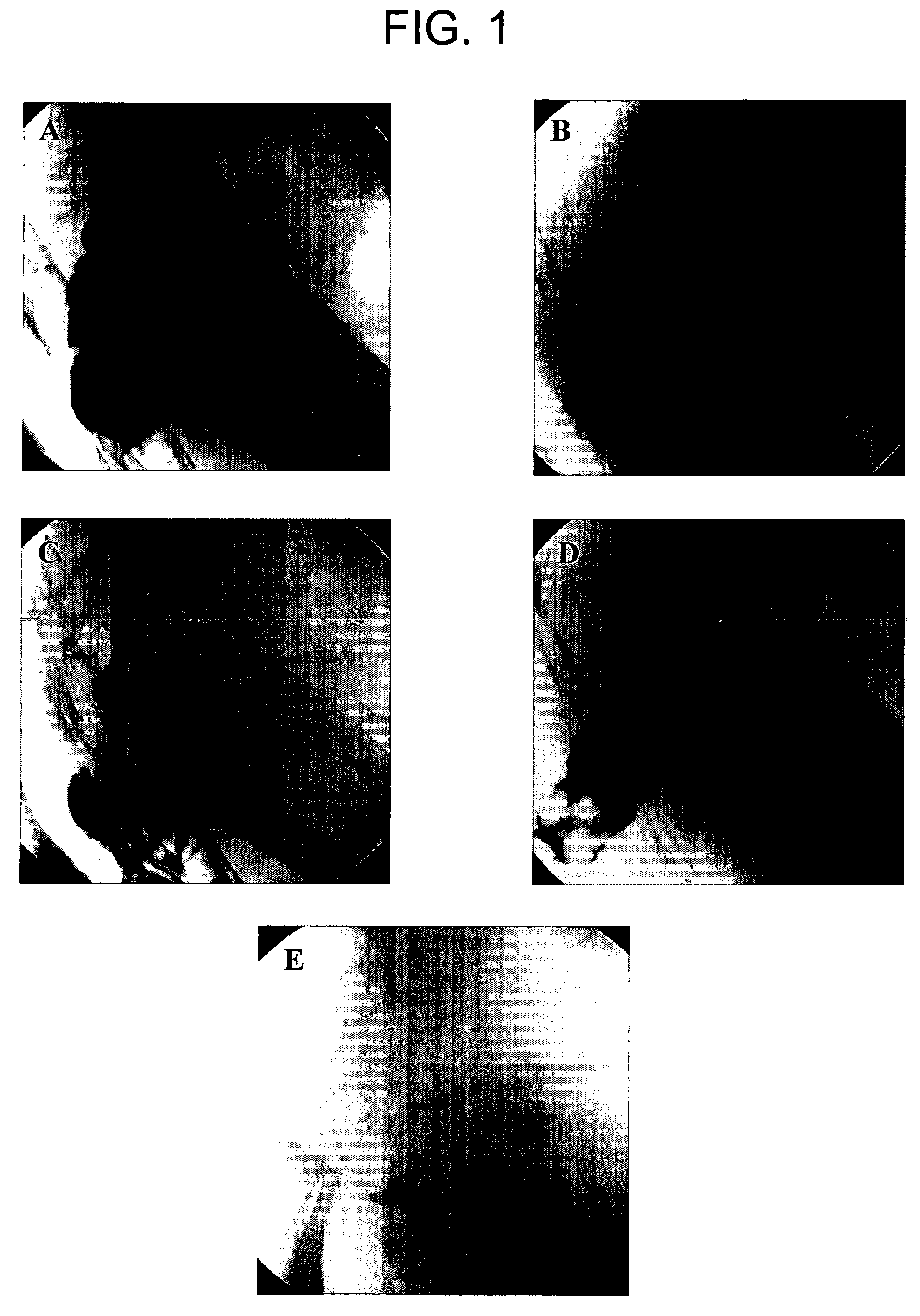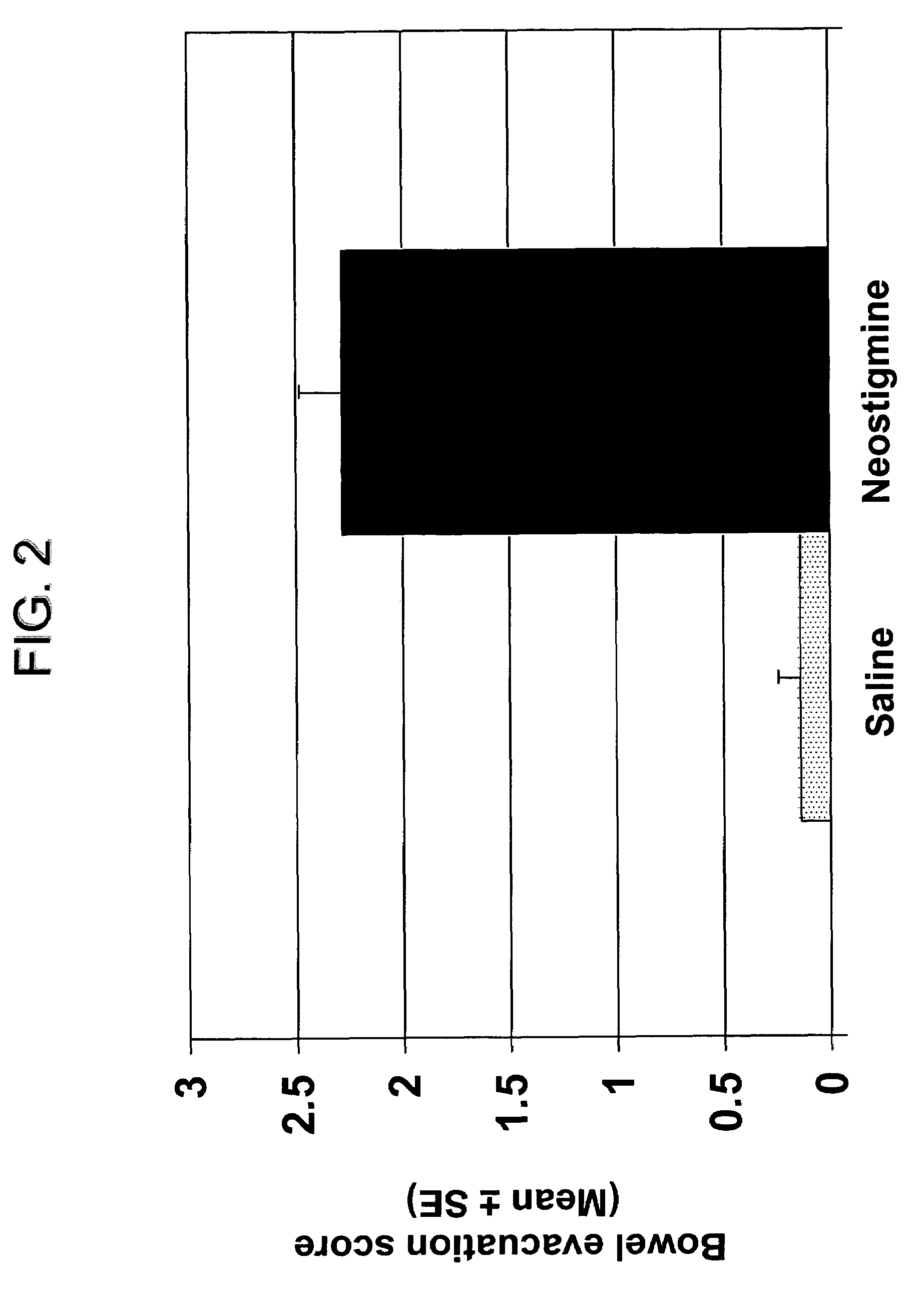Compositions and methods for bowel care in individuals with chronic intestinal pseudo-obstruction
a composition and pseudo-obstruction technology, applied in the field of can solve the problems of high cost of traditional compositions and methods for treating chronic intestinal pseudo-obstruction, and achieve the effects of convenient administration, easy to administer, and convenient to administer
- Summary
- Abstract
- Description
- Claims
- Application Information
AI Technical Summary
Benefits of technology
Problems solved by technology
Method used
Image
Examples
example 1
Decreased Colonic Motility Following Spinal Cord Injury
[0107]This example describes the effect of food and sleep on colonic motility in persons with spinal cord injury (SCI) as compared to the spinally intact (SI). This example demonstrates that colonic motility is decreased in SCI subjects; thus, such subjects may benefit from a therapeutic approach that increases bowel contractility.
[0108]Methods
[0109]Eight (8) subjects with SCI (mean age of 59 years, mean duration of injury of 17 years, 5 paraplegics and 3 quadriplegics), and 6 SI subjects (mean age of 57 years) were investigated. Each SCI subject complained of difficulty with evacuation (DWE) at least once in the 6 months preceding testing.
[0110]Colonoscopy was performed after routine bowel preparation and all subjects had normal examinations. After colonoscopy, the proximal end of a solid-state pressure transducer catheter (separated by 10 cm) was tethered to the splenic flexure using endoclips (Olympus). The subjects were then...
example 2
Use of Neostigmine and Glycopyrrolate Combination Therapy to Stimulate Bowel Evacuation in Six Subjects with Spinal Cord Injury
[0115]This example describes the use of a combination of neostigmine and glycopyrrolate to stimulate bowel evacuation in SCI subjects without concomitant bradycardia.
[0116]Six (6) subjects with spinal cord injury (both paraplegic and quadriplegic) were tested. Bowel care times were typically 1-2 hours 3 times per week in these individuals. After bowel preparation and establishment of IV access, subjects were transferred to a fluoroscopic imaging table and, while in the supine position, underwent flexible sigmoidoscopy for placement of a solid state motility catheter in the descending colon. The motility apparatus was attached to the colon using a recently described technique that prevents migration of the sensors during the study (Fajardo et al., Gastrointest. Endosc., 51:199-201, 2000). Both the fluoroscopic image and the external end of the catheter were i...
example 3
Comparison of Bowel Evacuation Response in Thirteen Subjects with Spinal Cord Injury Treated with Neostigmine Alone or a Combination of Neostigmine and Glycopyrrolate
[0121]This example describes the effect of neostigmine alone and a combination of neostigmine and glycopyrrolate on bowel evacuation in the same subjects using the monitoring methods described in Example 2.
[0122]Thirteen (13) persons with SCI (5 quadriplegics, 8 paraplegics) with a mean age of 46 years (range 25-69) and mean duration of injury of 16 years (range 1-31) were treated. None of the subjects had known heart disease and / or history of arrhythmias.
[0123]On separate days, subjects were given by IV bolus either (i) 2 mg neostigmine alone, (ii) a combination of 2 mg neostigmine and 0.4 mg glycopyrrolate, or (iii) normal saline. Subjects were blinded to the type of infusion being delivered. The effect of these infusions on bowel evacuation was assessed semi-quantitatively on a scale of 0 (no evacuation) to 4+ (compl...
PUM
| Property | Measurement | Unit |
|---|---|---|
| time | aaaaa | aaaaa |
| time | aaaaa | aaaaa |
| time | aaaaa | aaaaa |
Abstract
Description
Claims
Application Information
 Login to View More
Login to View More - R&D
- Intellectual Property
- Life Sciences
- Materials
- Tech Scout
- Unparalleled Data Quality
- Higher Quality Content
- 60% Fewer Hallucinations
Browse by: Latest US Patents, China's latest patents, Technical Efficacy Thesaurus, Application Domain, Technology Topic, Popular Technical Reports.
© 2025 PatSnap. All rights reserved.Legal|Privacy policy|Modern Slavery Act Transparency Statement|Sitemap|About US| Contact US: help@patsnap.com



